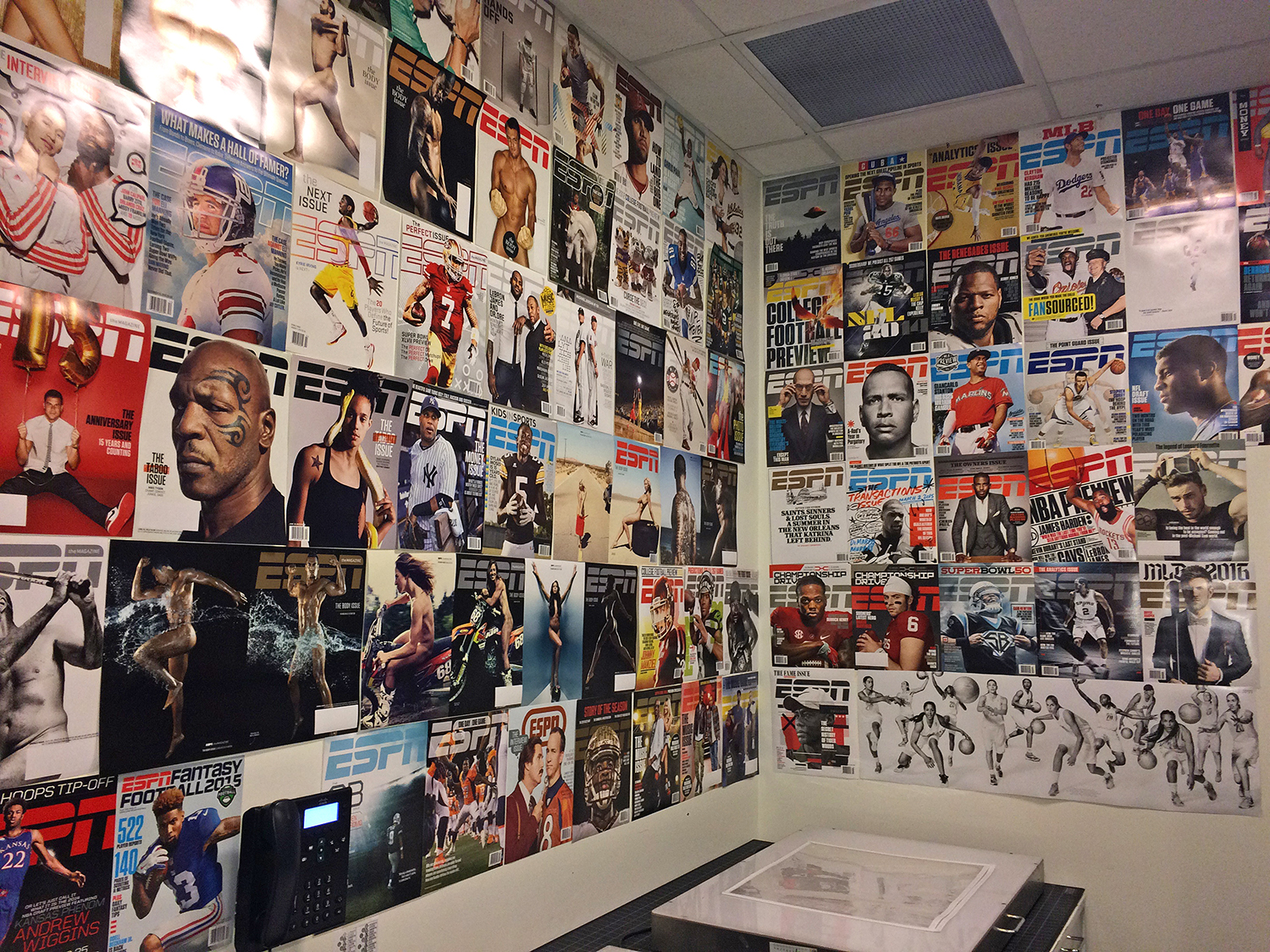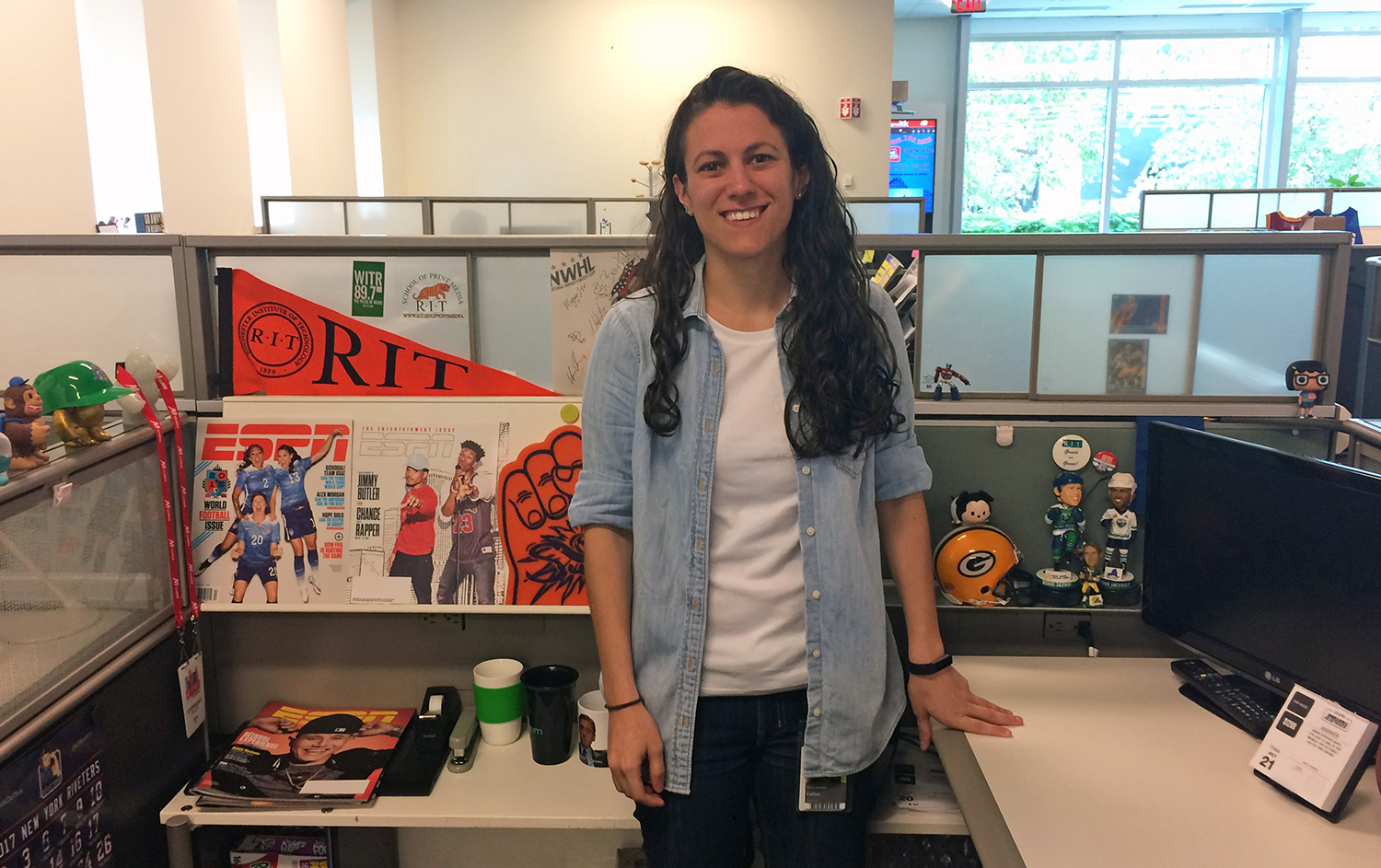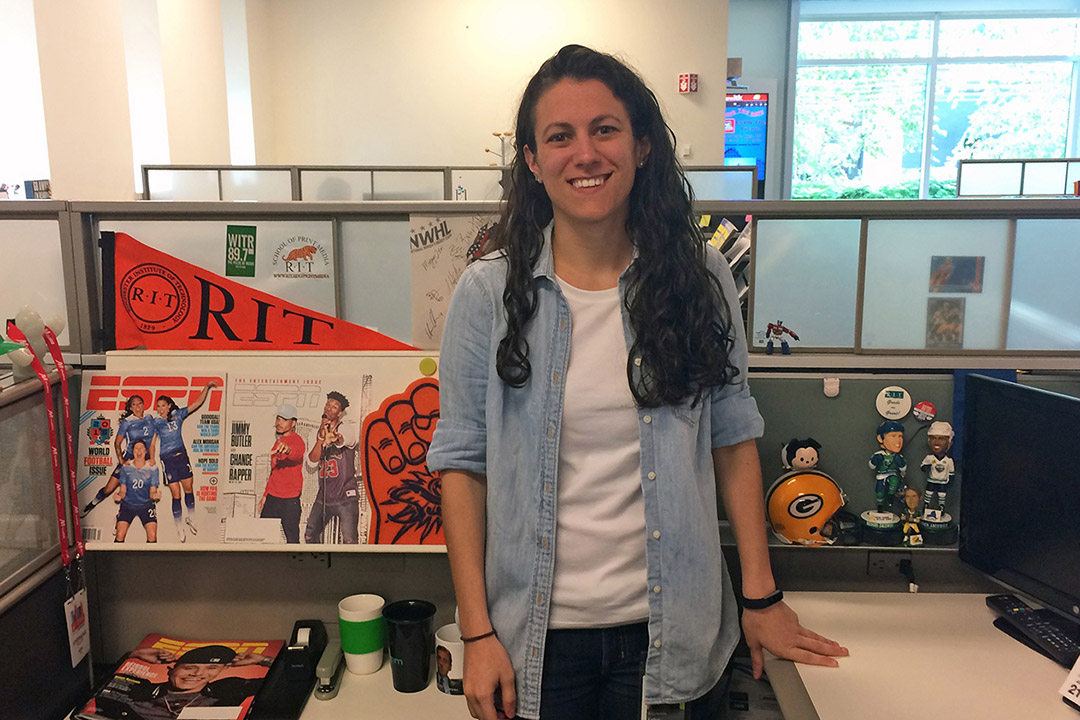After graduating from 'Harvard of printing,' alumna lands dream job at ESPN
Stephanie Fallon
Fallon at her desk
Sure, Stephanie Fallon was in the right place, at the right time, talking to the right person. But she was also the right person, with the right experience and background.
Fallon walked into a New York State American Legion Auxiliary convention a couple years ago as a volunteer of the women’s patriotic service organization’s Empire Girls State program. She walked out with a colossal job prospect.
Fallon engaged in small talk the father of a staff member of Empire Girls State, an annual workshop focused on Americanism and the political process. Turns out, he works for ESPN The Magazine, and was impressed by Fallon’s credentials, including where she received her education.
Fallon’s disclosure that she got her undergraduate (2012) and graduate (2014) degrees from RIT’s School of Media Sciences (SMS) was apparently music to the man’s ears. According to Fallon, he holds the school in the highest regard.
“He called us the Harvard of printing,” Fallon said. “… He said, ‘We (ESPN) have to get you.’”
Right time. Right place. Right knowledge. Right school. What a pleasant mix of ingredients.
Soon enough, Fallon used that connection and her experience at RIT to land a job with ESPN The Magazine, where Fallon is an associate manager of prepress and digital production. She has worked at the sports media giant’s headquarters in Bristol, Conn., for a little over two years.
“It just came from a casual conversation — I wasn’t really in networking mode,” said Fallon, who owns a BS in new media publishing (now media arts and technology) and an MS in print media.

The Frankfort, N.Y., native works in ESPN The Magazine’s production department, concentrating on the bi-weekly publication’s image editing and markup, layout production, and checking mechanics. Fallon said her team collaborates with printers all the way through distribution.
“It’s the dream,” Fallon said.
A “crazy Packers fan,” Fallon grew up playing and watching sports. So when ESPN expressed an interest in her talents, she jumped at the opportunity to combine her vigorous desire to work at a magazine with her passion for sports.
“Not only do I get to do what I love, but I get to be around the subject that I love,” she said. “ESPN is always a part of the conversation whenever sports come up. So to be inside on the ground level, you kind pinch yourself saying, ‘I am helping to make this content happen.’”
Lately, Fallon has splashed heavy attention on the digital edition’s reader view, which displays content in a way that’s similar to iBooks. ESPN The Magazine recently updated the styling of its reader-version templates, so Fallon is tasked with applying them, and also formatting articles, images, and other assets imported from print issues to build digital editions.
“I’ve been working on that for a couple months, and I think it looks really sharp, compared to the old version,” Fallon said of the new-and-improved reader view.
A few months ago, during the spring semester, Fallon returned to RIT to share her professional experiences with SMS graduate director Christine Heusner’s magazine publishing class. As a guest speaker, Fallon opened up about the nature of the industry and types of jobs students in the field can obtain.
She also revealed a fact that may have already been known by the crowd of students: being in production likely means signing up for crazy hours. Fallon, surely, has her share of nontraditional shifts.
She does work normal hours some weeks, but when an issue is on the verge of deadline, Fallon heads to the office in the evening and works overnight until it’s ready. Needless to say, she’s pushed through some marathon shifts.
“I’ve seen the sun rise leaving work a couple times,” Fallon said.
Those days don’t bother her, though. In fact, she relishes them. The driven mindset Fallon owns today was entrenched in her during her days in the School of Media Sciences, especially when she conducted research for her graduate thesis, “A Conjoint Analysis of Reader Preference for the Layout of Digital Editions of Magazines.”
Fallon, a graduate assistant while pursuing her master’s degree, altered how leading digital women’s magazines such as Cosmopolitan and O, The Oprah Magazine were presented in tablet form, and then had students grade the various layouts. From that, Fallon said, she could calculate their font choices and favored amount of white space on a page, among other elements.
While Fallon’s findings determined no strong preference for the variables she studied, the process she stayed so committed to was more beneficial than anything. Her multi-year exploration of reader preference required high levels of discipline and diligence — two qualities she demonstrates daily at ESPN.
SMS hasn’t been referred to as the “Harvard of printing” for nothing.














